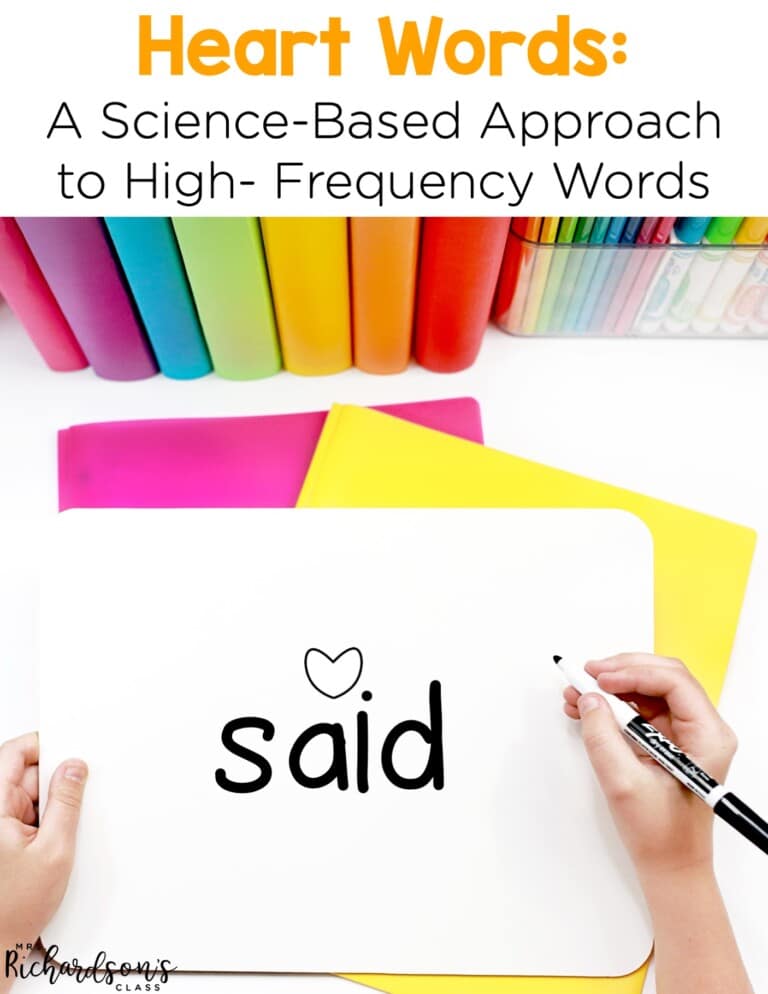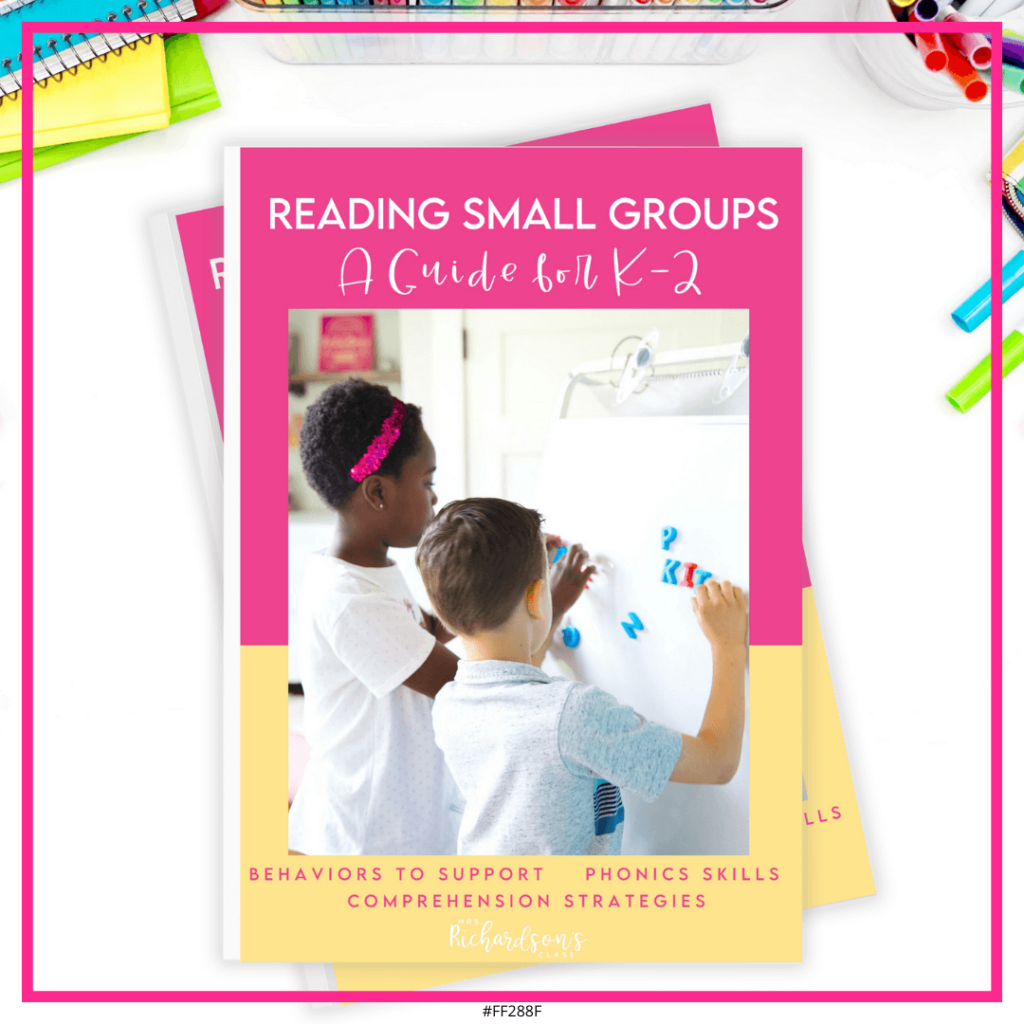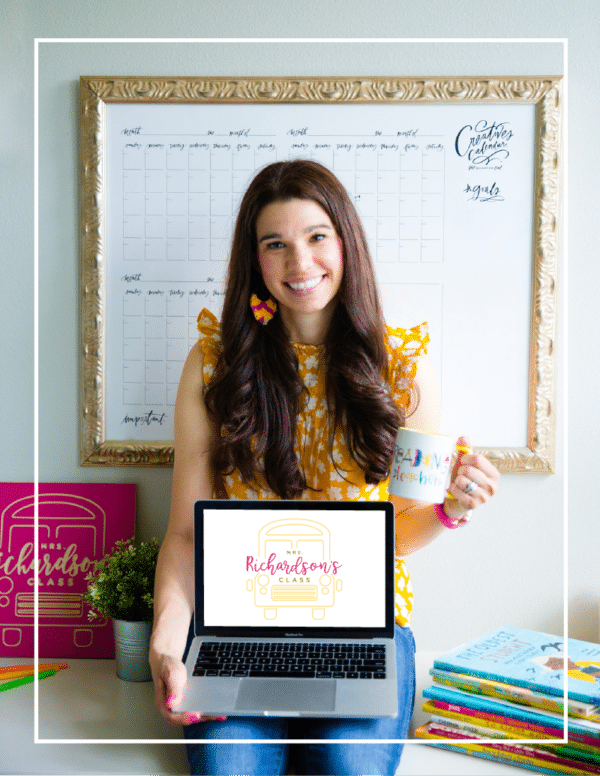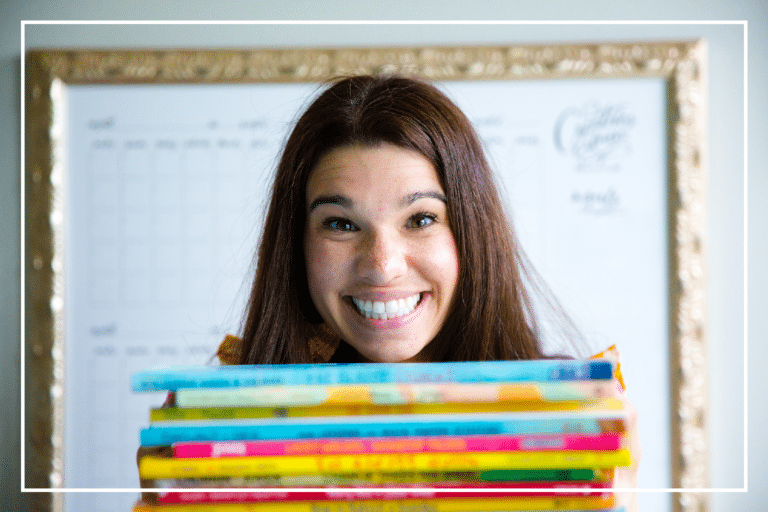



Guided reading has several tiny bits and pieces that come together to make your time at the table successful. I feel like the more I taught guided reading, the more aware I became of each puzzle piece. One of the pieces that I don’t think I fully grasped the power of until years later was scheduling and creating my guided reading groups. Sometimes this task became so routine for me that I failed to take full advantage of creating guided reading groups like I should. Other times I felt like I was barely keeping my head above water when it came to sticking to my schedule. Here are a few things I learned along the way.
Yes, they are! Your students aren’t stuck in a group and the groups don’t always have to be based on reading level. Shocker? It’s true! The guided reading gurus, Fontas and Pinnell, say so themselves! You are free to move kids from group to group. Maybe you need to focus on a strategy with your level B group and there is a little reader in your level C group that can benefit. Move them down for the day and coach them through the skill again.
Sometimes the week was packed with ceremonies, assemblies, the math lesson would take a bit longer, or the writing was going SO well I didn’t dare stop the little authors. When this would happen, I found myself struggling to get to three guided reading groups per day. I found myself only getting to two groups and then feeling guilty for not getting to three because of an expectation I had set for myself. On these days, I had to remind myself that I knew my kids better than a schedule and and so at times, I wouldn’t stick to my schedule. Instead of seeing groups 2, 3, and 1 like I had planned, I was going to only see groups 2 and 3 and I KNEW that group 1 was going to be okay and I would just adjust their group time the next day I met with them. I gave myself some grace.
Yes, it’s true! They sure are. You don’t have to always meet with the same groups on the same days. Here is a snap shot of how I always began scheduling my groups, but they got moved around each and every week!
It depended on our daily schedule and on who I really needed to spend time with that day. That’s OKAY! Don’t be glued to your schedule so much that your kids aren’t benefitting as much as they could.
Need some help sketching out your groups? Grab the FREEBIE from my guided reading binder and you can easily get started.
What is your biggest hurdle when it comes to your guided reading groups? I’d love to brainstorm with you! Leave a comment and let me know!

Want to use the latest research to boost your readers during small groups? This FREE guide is packed with engaging ideas to help them grow!

I’m a K-1 teacher who is passionate about making lessons your students love and that are easy to implement for teachers. Helping teachers like you navigate their way through their literacy block brings me great joy. I am a lifelong learner who loves staying on top of current literacy learning and practices. Here, you’ll find the tools you need to move your K-2 students forward!


| Cookie | Duration | Description |
|---|---|---|
| cookielawinfo-checkbox-analytics | 11 months | This cookie is set by GDPR Cookie Consent plugin. The cookie is used to store the user consent for the cookies in the category "Analytics". |
| cookielawinfo-checkbox-functional | 11 months | The cookie is set by GDPR cookie consent to record the user consent for the cookies in the category "Functional". |
| cookielawinfo-checkbox-necessary | 11 months | This cookie is set by GDPR Cookie Consent plugin. The cookies is used to store the user consent for the cookies in the category "Necessary". |
| cookielawinfo-checkbox-others | 11 months | This cookie is set by GDPR Cookie Consent plugin. The cookie is used to store the user consent for the cookies in the category "Other. |
| cookielawinfo-checkbox-performance | 11 months | This cookie is set by GDPR Cookie Consent plugin. The cookie is used to store the user consent for the cookies in the category "Performance". |
| viewed_cookie_policy | 11 months | The cookie is set by the GDPR Cookie Consent plugin and is used to store whether or not user has consented to the use of cookies. It does not store any personal data. |
14 Responses
My biggest hurdle is guided reading plans and detailing them. Recording everything that is done in the GR binder..
Hi Jennifer! I use a pretty basic lesson plan template from the guided reading binder. Also, I outline what I will be doing before I meet with the group, but I always go back and fill in details. Maybe you could try this! 🙂
It’s honestly knowing what skill or strategy to work on when. I love the flexible groups, but struggle to balance everything! I
Love that you acknowledge the reality of days where we have no control over our schedules.
Thank you!
I agree with Tina-word work. I am teaching third grade- word work ideas
Hi Amanda. I am curios to how your kids rotate through their stations. Do you tell them when to switch or do they stay S long as they wish?
I liked having control and guiding them so I assigned stations. Each day they got a new set of 3 stations. 🙂
Also, we set a timer for 20 minutes. They stayed at each station until the timer went off!
My biggest hurdle is that I have 53 students divided among three blocks.
We are in person, but must be social distancing. What would be the best way to set up guided reading groups? I thought about Google Meets, but it takes forever to set up my students- I have a very needy group this year. Any advice is welcome 🙂
Can you use Zoom? That has been THE best way from what I have both tried and observed as a parent. You can have everyone together and just take aa few to a small group while the other work on “stations” or are able to leave. Then they don’t have to do anything, just wait for you to assign them a private room with you and the other kids.
Hi, I am an AIS teacher. In my 2nd grade group I have 8 students at various reading levels ( d thru g). I try to create groups by level. We are working and decoding.
In my third grade groups, I have 8 students with various levels of h thru l. I try to do skill based learning and also help them decide. Any advice would be great. I feel like I am not doing my best with these groups.